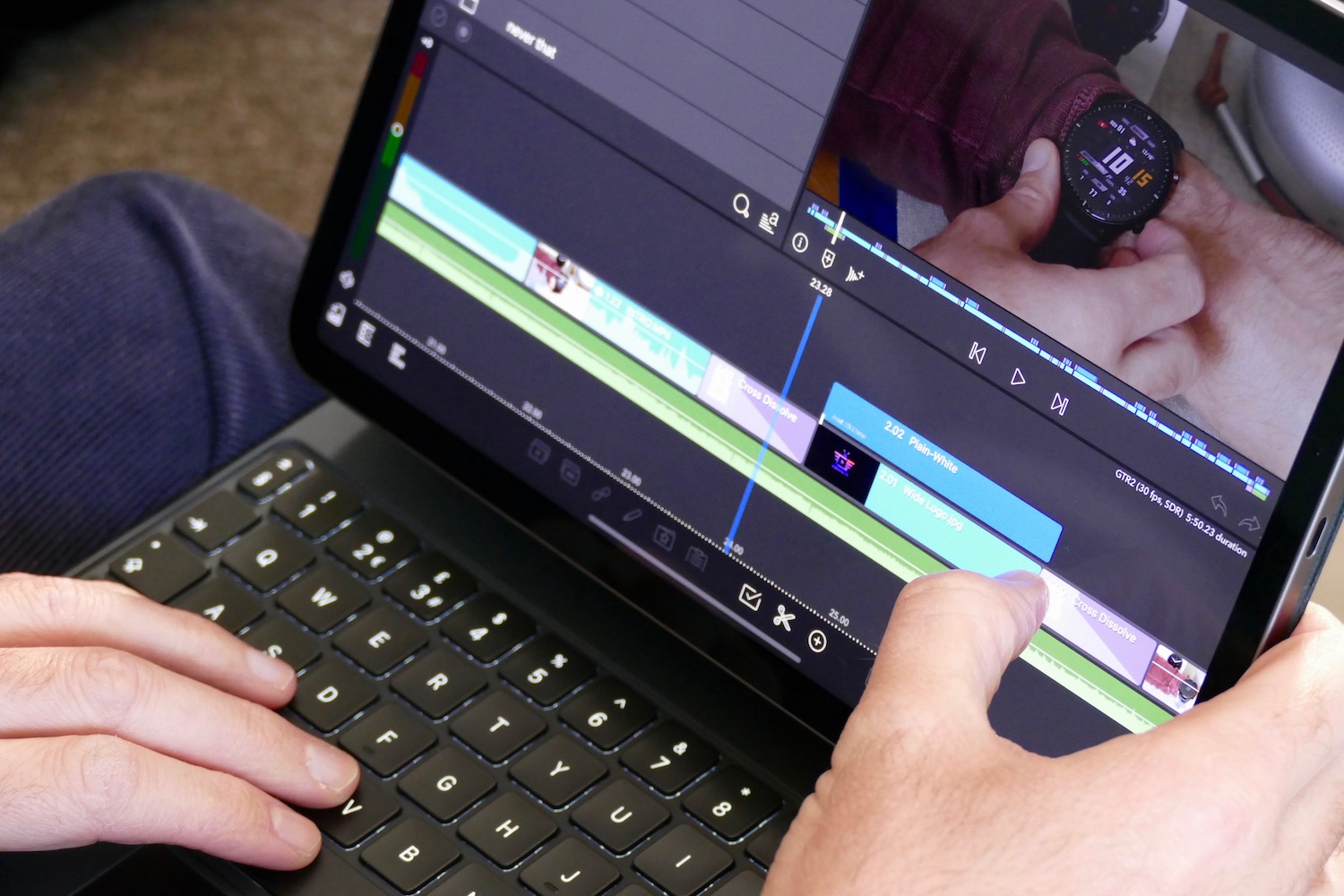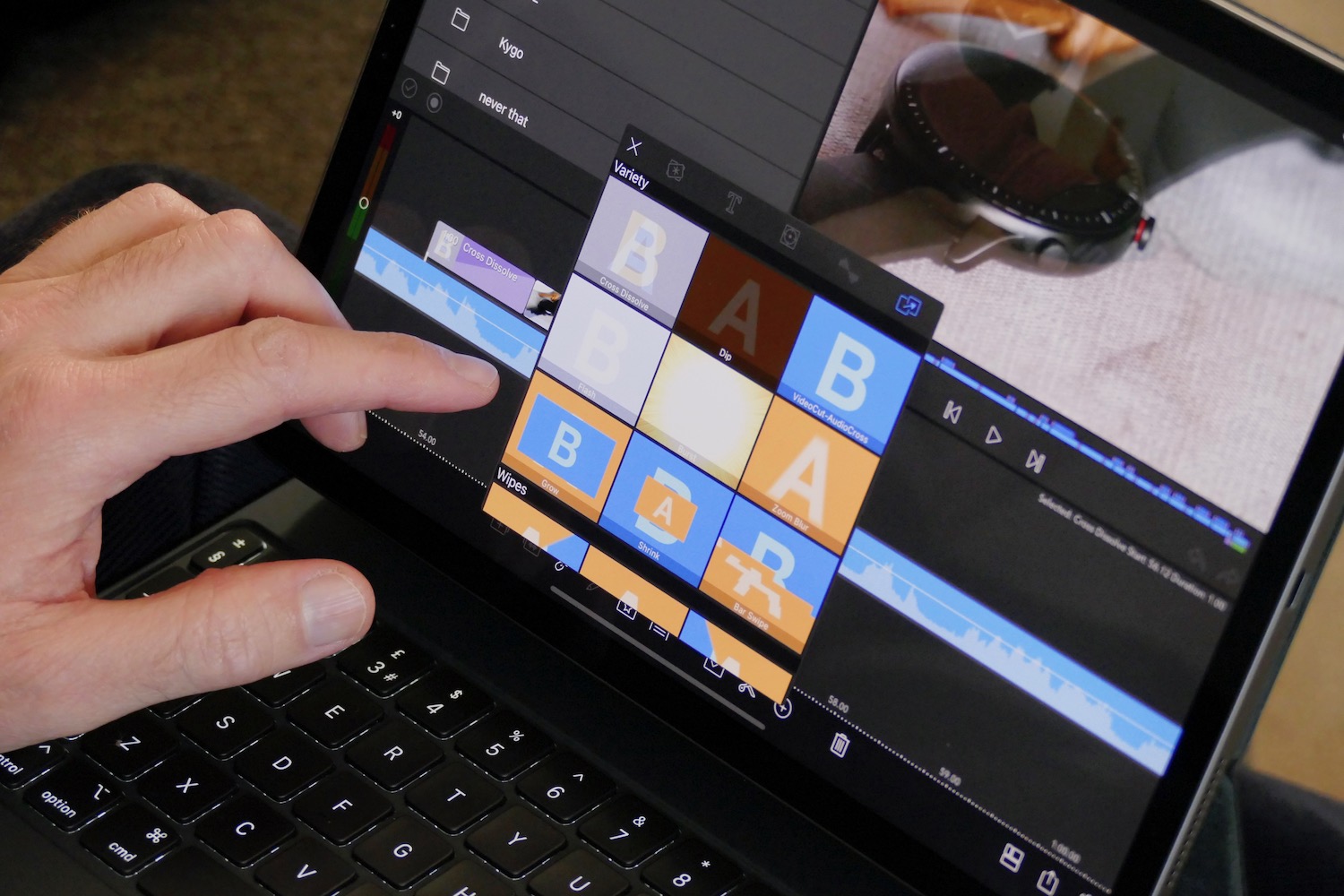The rigors of 2020 and its various “stay at home” orders left me looking for creative outlets that didn’t involve leaving the house, or interacting with other people. Making videos for YouTube was something I’d thought of doing for a while, but never found the time or the inclination. Lockdown meant I had plenty of time, but did I have the tools needed to actually create a decent video?
What I definitely didn’t have was an up-to-date Mac or PC, absolutely any knowledge of video editing, or a desire to spend masses of money on software I didn’t understand. What I did have was a 2020 Apple iPad Pro. Would that be enough? While it’s not down to me to decide if I succeeded in making informative videos, what I did learn is how immensely capable the Apple iPad Pro is as a complete video-creation machine for someone like me, who had absolutely no experience or technical knowledge in this area.
Beyond iMovie, but not beyond me
Armed with my iPad Pro, I went in search of software. Apple bundles the iMovie app with iOS and iPadOS, and it’s adequate for stitching together quick social videos. It actually does it all for you, with the only input needed is selecting the videos you want in the final product. Apple’s iMovie makes basic, shareable videos in a few moments, with the absolute minimum effort required. It’s not really feature-rich enough to be of use to the budding YouTuber, though.

This is the point where it’s easy to give up, imagining you need to learn a complex piece of video-editing desktop software like Adobe Premiere Pro or Final Cut Pro X before getting started. No one wants to do this when Apple’s iOS software is so much easier, and so much more friendly to use. In actuality, there’s no reason to turn to your computer, and after searching for recommendations and receiving many, one piece of iOS video-editing software repeatedly came up: LumaFusion.
Described as a “multitrack video editor,” LumaFusion costs $20, or 15 British pounds, to purchase, which happily is a one-off fee rather than part of an ongoing subscription model. To put the cost into context, you’d pay at least $50 each month for Adobe Premiere Pro. Adobe’s software is, of course, worth it if your job is producing pro-level video, but not when you’re either just starting out or doing it for fun. I paid up for LumaFusion and got started.
iPad becomes a one-stop video shop
Before going into LumaFusion, the iPad had to step up and help with video creation, and it was an absolute trooper. I wrote my scripts in Pages, so I could use its fantastic “Presenter Mode” option, which acts like a teleprompter, scrolling the script at a speed of your choice so you can read it off the screen when shooting video. Very handy.

I used a USB-C hub with an SD card slot connected to the iPad Pro to transfer video files from my camera’s SD card, while other times I synced the files from my MacBook to the iPad using iCloud. Both methods were fast and pain-free. Incidental video I shot using my iPhone was quickly sent to the iPad using AirDrop. The iOS Files app (which took ages for Apple to include) makes management of these files simple. I also stored logos and stills in separate folders on the iPad, where they are ready for repeated use.

The only one stumbling block during the creation process where I had to turn to my MacBook to complete the task was downloading music. The tracks I decided to use would play through Chrome and Safari, but would not download directly onto the tablet. This was solved by using my laptop instead, and then transferring the file using iCloud. So close.
Simple, yet powerful video editing
Up until this point, there was nothing I hadn’t done before. Now came the challenge. To prepare for editing, I watched some of LumaFusion’s how-to videos to familiarize myself with the software and the way it worked. I didn’t find the need to watch all of them, but just dip in and out on how to get started, as well as check out guides on specific features I may want to incorporate in the video. I spent perhaps an hour doing so, and it was an excellent basis to get started with this superb app.

The multitrack aspect of LumaFusion is what makes it really powerful. It means you can transition between different clips while maintaining the voice-over, and you can add background music and different effects, too. Learning how to use it didn’t take long, and the touch-based interface is incredibly natural. Everything from using transitions to adjusting the speed and direction of a clip — plus adding filters or adjusting parameters, creating title cards, and giving scenes a cinematic edge with zooms and pans — was shockingly easy to do.
LumaFusion’s extensive feature set also solved some problems. In one video, the sound didn’t record properly, so I used the iPad’s Voice Memo app to record a voice-over, and then added it into the video. LumaFusion’s simplicity meant I could cut and sync it to the video perfectly. It saved me from rerecording the video, and was easy enough and produced such a good final product that I considered doing the same thing again even if I didn’t mess up the original sound.
The iPad continued to enable my creativity. I wanted to create some on0screen titles outside of a simple title card, and again, I didn’t want to spend money doing so, or deviate away from the iPad. I found a guide on how to use the Apple Pencil and the iPad’s screen-recording feature to handwrite the titles, and then to use LumaFusion’s green-screen feature to overlay the animation onto the video. I thought the effect looked great for no cost and minimal effort.
When my opus was finished, I uploaded it to YouTube directly from LumaFusion. From beginning to end, I’d produced a video I was happy with using the iPad Pro (and one MacBook assist) — and it cost me just $20 in software, and the learning curve was surprisingly flat.
More than just a Netflix machine
Apple and dedicated users have been trumpeting the tablet’s versatility for ages, and I was impressed with how easily the iPad Pro replaced my MacBook Air for work when I reviewed it earlier this year. What the last several months have taught me is that its all-around ability is perhaps still being undersold.
I’ve gone from taking my MacBook Air out with me to only taking the iPad Pro, whether it’s for work, entertainment, or just about any other task where my phone feels too small. Adding what I consider to be a complex, power-intensive task like editing and creating video to its list of things it can handle without a problem, lessens my reliance on — or my need to own — a laptop even more.
The iPad is probably more capable than many realize, and more than many people will ever need. While the iPad Pro is costly, there’s no reason LumaFusion won’t operate in exactly the same way on one of the other Apple iPad models, and it works really well on an iPhone, too. So don’t feel thta you have to have the latest, greatest, and most powerful hardware if you want to exploit the tablet’s versatility.
What the iPad Pro has done these last months is fuel my own creativity, encourage experimentation, provide hours of enjoyment, help improve my presenting skills, and enable me to learn about video editing — all with absolutely no fuss whatsoever. There are very few single tech products that can claim to be able to do the same.
Editors' Recommendations
- Apple is about to do the unthinkable to its iPads
- Why you should buy the iPhone 15 Pro instead of the iPhone 15 Pro Max
- I’ve had the iPhone 15 Pro for six months. Here’s why it’s still amazing
- 5 phones you should buy instead of the iPhone 15 Pro Max
- You may have to wait a while longer for new iPads







